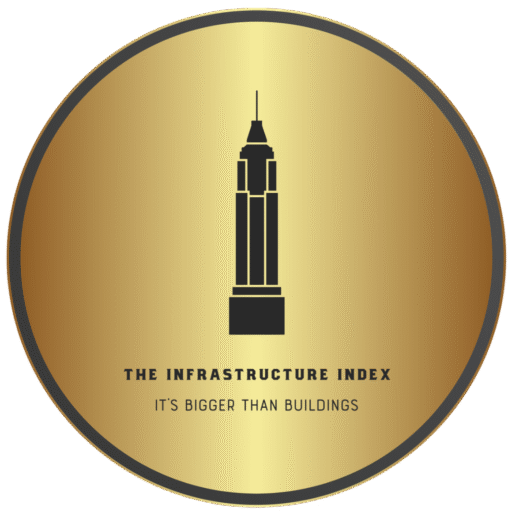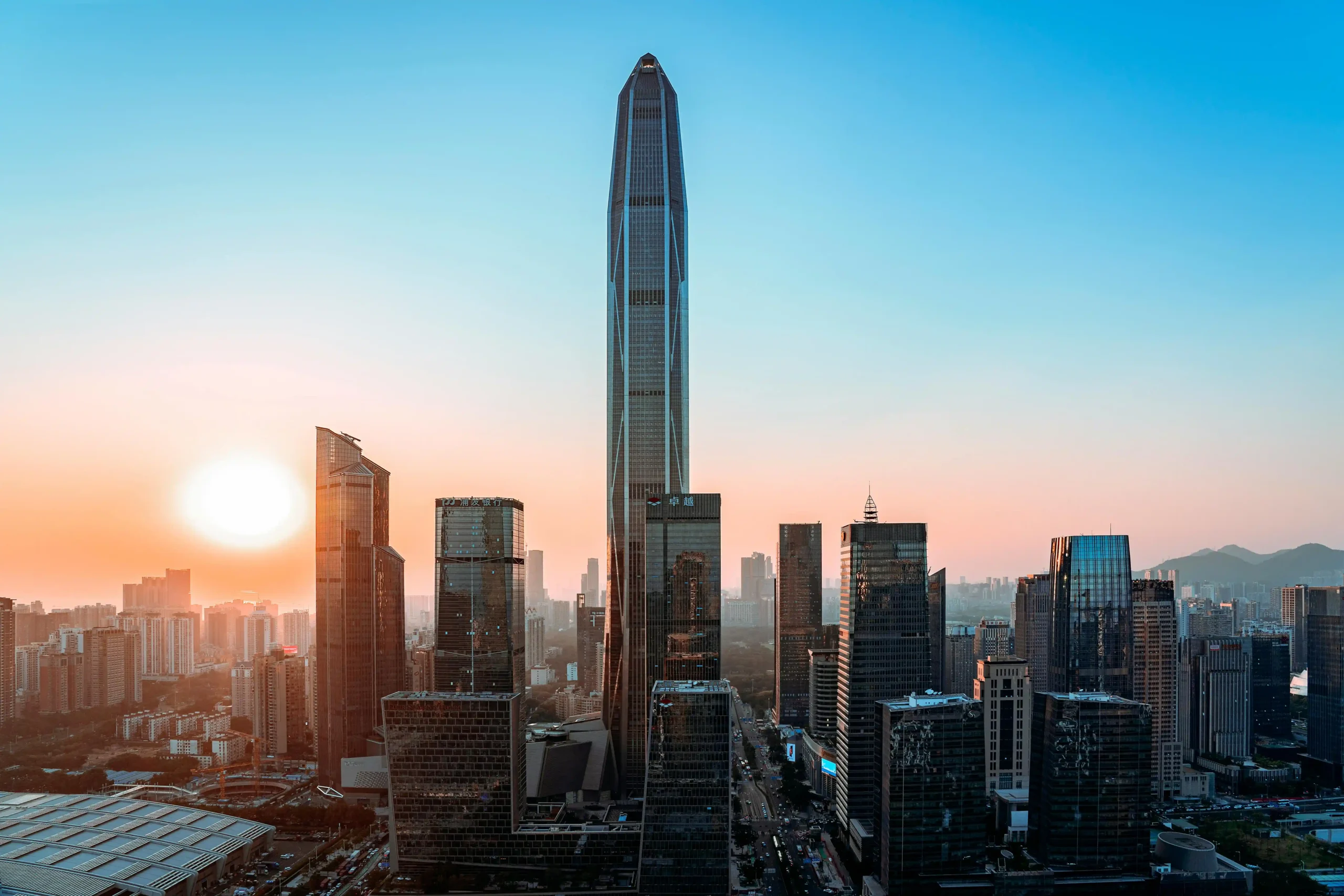Completed in 2017, the Ping An Finance Center (平安国际金融中心) has quickly become one of the most iconic structures in China and a defining landmark of the rapidly growing city of Shenzhen. Designed by the global architecture firm Kohn Pedersen Fox Associates, this supertall skyscraper soars to a height of 599 meters (1,965 feet), making it the tallest building in Shenzhen, the second tallest in China, and the fifth tallest building in the world as of 2025. With 115 stories of commercial space, it anchors the Futian business district and reflects the city’s global ambitions.
Located at 5033 Yitian Road in the heart of Shenzhen’s central business district, the tower is impossible to miss. Its tapered profile and sleek stainless-steel cladding project a futuristic elegance that stands out even among the city’s fast-rising skyline. Commissioned by Ping An Insurance, one of China’s largest financial services companies, the building has become a symbol of corporate prestige and architectural ambition.
Tower Stats
- Location: 5033 Yitian Road, Shenzhen, China
- Completed: 2017
- Use: Office (primary), retail, conference, observation
- Height: 599 m (1,965 ft) to spire
- Floor Count: 115
- Floor Area: 5 million sq ft
- Elevators: 33 double-deck elevators (up to 7 m/s)
- World Ranking (2025): 5th tallest globally, tallest all-office building
- Observation Deck Height: 562 m (1,844 ft), tied 2nd highest globally
- Estimated Cost: $1.5 billion USD
- Estimated Capacity: ~15,500 occupants
Early Significance
When it topped out in 2015 and was completed in 2017, the Ping An Finance Center immediately made headlines. It became the tallest building in China outside of Shanghai and the second tallest in the nation overall, only behind the Shanghai Tower. Notably, it became the tallest building in the world used entirely for office space, surpassing the One World Trade Center in New York in that specific category. The building also features one of the world’s highest observation decks, tied with Shanghai Tower at 562 meters (1,844 feet), reinforcing its role as a record-breaker.
Its sheer height and high-profile backers elevated Shenzhen’s status as a global financial center, underlining the city’s transformation from a fishing village in the 1980s to a major economic powerhouse by the 2010s. The tower helped signal that Shenzhen was not only a hub for tech innovation but also a serious player in global finance.
Design and Features
The Ping An Finance Center was designed in a neo-futurist style, with a sleek form that emphasizes verticality. The tower’s gently tapering sides and faceted exterior give it a crystalline appearance, while its stainless-steel facade was engineered for both durability and beauty. Its design was not only aesthetic but also aerodynamic—engineered to reduce wind resistance and ensure structural stability at extreme heights.
Inside, the building contains roughly 500,000 square meters (5 million square feet) of floor space, nearly all of which is dedicated to office use. It also features conference areas, high-end retail, and restaurants. The tower includes 33 double-deck elevators, some of which travel at speeds of up to 7 meters per second (about 16 mph), offering efficient access to the upper floors.
The observation deck, known as Free Sky, is located on the 116th floor of the tower at a height of 562 meters (1,844 feet), making it tied for the second highest in the world. Situated near the very top of the Ping An Finance Centre, it offers sweeping 360-degree views across Shenzhen, the Pearl River Delta, and even the distant mountains of Hong Kong on clear days. The experience is designed to impress, with floor-to-ceiling glass walls, interactive displays, and digital guides that highlight points of interest on the skyline. Tickets typically cost around ¥200 RMB (roughly $30 USD) per person. It’s one of the most unforgettable urban experiences in China and a major highlight of the tower.



Comparison with Shanghai Tower and Other Supertalls
Although the Ping An Finance Center ranks as the fifth-tallest building in the world, its design and engineering set it apart from other megatall structures. Shanghai Tower, which is taller at 632 meters (2,073 feet), features a spiralling form and mixed-use interior that includes hotels and retail in addition to office space. In contrast, Ping An IFC’s singular focus on office use makes it the tallest building in the world solely dedicated to commercial workspace.
Its height is measured to the tip of its spire, which is fully integrated into the architectural design—not a mere antenna or decorative flourish. The spire houses communications equipment and contributes to the tower’s signature silhouette. While buildings like the Burj Khalifa and Abraj Al-Bait use stepped or clustered forms to achieve greater height, Ping An Finance Center remains relatively slender and symmetrical from base to crown, emphasizing clean lines and functionality.
Cultural and Economic Role
Since opening, the Ping An Finance Center has become a central pillar of Shenzhen’s economic landscape. Its presence draws major financial institutions, multinational corporations, and top-tier law firms to its halls. It also acts as a showcase of the city’s aspirations—where technology, finance, and innovation converge.
Culturally, the building is a source of local pride and an unmistakable symbol of Shenzhen’s skyline. It regularly appears in promotional materials for the city and has been featured in countless photographs, drone videos, and architecture documentaries. It’s also a common backdrop for major events and a popular destination for tourists seeking panoramic views of one of China’s most dynamic urban environments.
Recent Developments
Although relatively new, the Ping An Finance Center has continued to evolve since its opening. The surrounding area, known as the Shenzhen Futian CBD, has expanded with new commercial complexes, green spaces, and transit connections. The tower’s connectivity to the Shenzhen Metro and the city’s high-speed rail network ensures that it remains an accessible and desirable address for global firms.
In recent years, Ping An Group has also invested in enhancing the tower’s smart infrastructure. Upgrades include energy-efficient systems, advanced building automation, and AI-driven environmental controls to reduce the building’s carbon footprint. These efforts aim to position the tower as a model for sustainable high-rise development in the 21st century.
Legacy
Even though it is only eight years old, the Ping An Finance Center has already established itself as one of the most important skyscrapers in Asia. As of 2025, it stands as the fifth-tallest building in the world and the tallest all-office building globally—an enduring marker of Shenzhen’s rise and China’s global influence in vertical architecture.
With its streamlined form, impressive records, and central role in one of the world’s fastest-growing cities, the Ping An Finance Center represents the future of urban development. As the skyline of Shenzhen continues to evolve around it, the tower will remain a fixture of the city’s identity—both as a beacon of economic power and a masterpiece of modern design.

